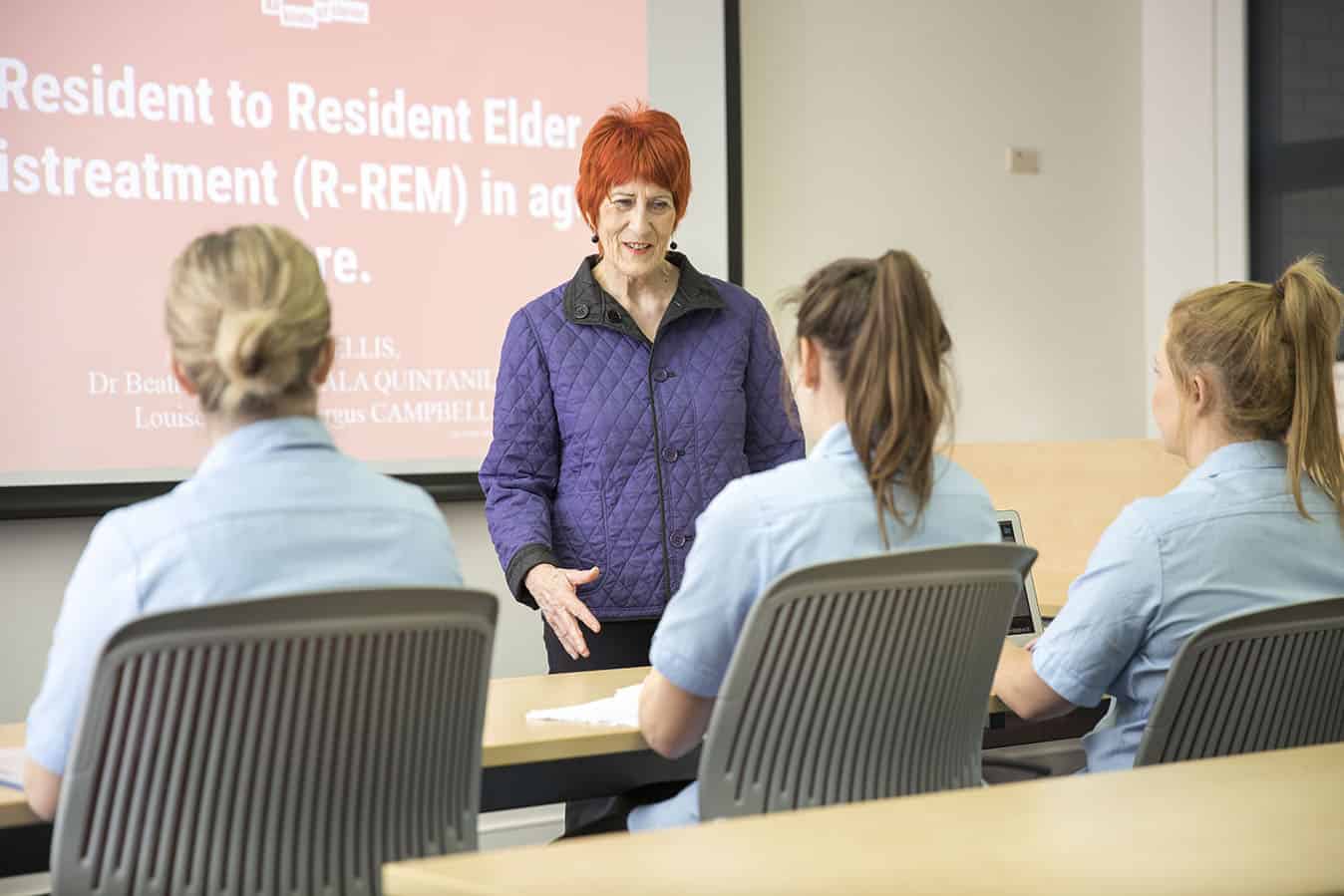The Age on Wednesday 13 November 2019, reported that “Elderly residents are dying in violent assaults carried out by fellow patients…”
It also suggested that “A lot of these situations can be averted with a consistent approach, good training and skill set among staff…”
One such approach is SEARCH: Support, Evaluate, Act, Report, Care plan and Help to avoid this occurring (Ellis et al. 2014).
The SEARCH approach involves:
Support residents involved in the incident. Physical injuries must be attended immediately. Support must be provided for residents involved in and/or who have witnessed an event because violence can be upsetting for all.
Evaluate the situation and environment to identify those directly or indirectly involved in the incident, (both victim and perpetrator), any risk factors or precipitating events. The initial evaluation is to identify immediate actions required and then:
Act immediately. The actions taken will depend on the type of incident and the environment where the incident occurred. If the incident is occurring, verbally attempt to stop the incident; use non-threatening body language and a calm, firm tone of voice. If a verbal request is not successful, physically separate residents, ensuring staff are not injured in the process. A call for help from staff may also be necessary. An assessment of the residents for physical harm would then occur.
Of importance is the manner in which the staff approach the residents: showing concern and empathy with appropriate facial expression and calm language, avoiding patronising or humiliating confrontational language, blaming or displaying strong emotional reactions, such as shock, disgust or embarrassment.
Report all incidents of aggression and assault and document. Many incidents of assault are currently not reported. The reporting of incidents must be encouraged by all levels of management.
Care plans must document interventions or strategies to manage and/or avoid or minimise incidents of aggression and assault. Ensuring the safety of all residents is the goal. Every incidence of aggression and assault should be documented, with clear, specific interventions ensuring a consistent approach.
Help to avoid incidents of assaults is the role of all staff, who need to be actively involved in the discussion and development of management strategies, and care plans. An acute awareness of the physical environment and the interactions between residents is important.
In many situations, aggression or assault are ignored by staff as it is not identified as serious, often perceived as normative, and rarely reported, leaving residents at potential risk. This approach provides clear steps to follow to help avoid these risks.
Authors
Julie Ellis, PhD, RN is Senior Lecturer at the School of Nursing & Midwifery, La Trobe University, Victoria
Louise Ward, PhD, RN is Associate Professor at the School of Nursing & Midwifery, La Trobe University, VictoriaFergus Campbell, MNS, RN is Lecturer at the School of Nursing & Midwifery, La Trobe University, Victoria
Reference
Ellis, J.M., Teresi, J.A., Ramirez, M., Silver, S., Boratgis, G., Kong, J., Eimicke, J.P., Sukha, G., Van Haitsma, K., Pillemer, K.A. & Lachs, M.S. 2014. Managing resident to resident elder mistreatment (R-REM) in nursing homes: the SEARCH approach, The Journal of Continuing Education in Nursing, vol. 45, no. 3, pp. 112-121.
Photo credit: La Trobe University









